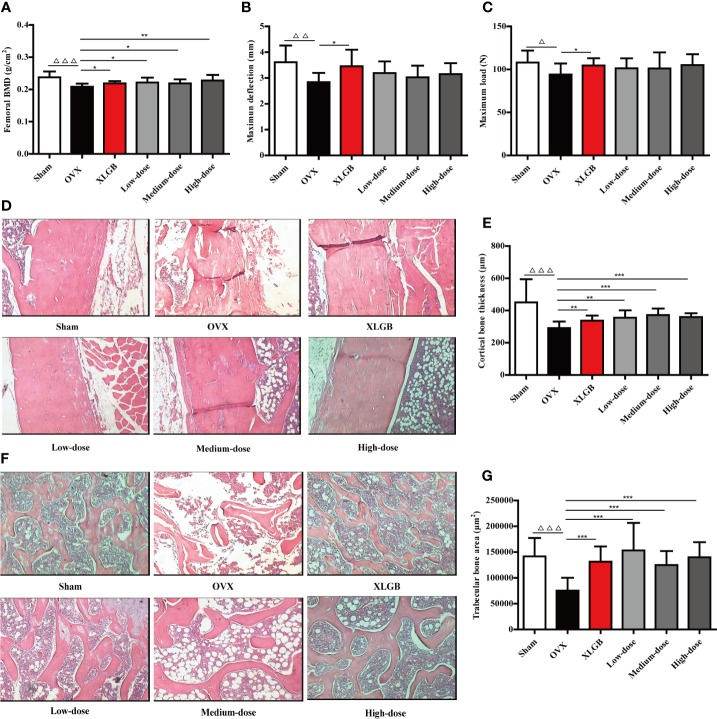In the original article, there was a mistake in Figure 4 as published. Panels 2 and 3 (cortical bone tissue stained with H&E for OVX Model and XLGB treated group, respectively) of Figure 4D in the original article was the same images as panels 2 and 3 of Figure 2E in Liang Q, Lv M, Zhang X, Hu J, Wu Y, Huang Y, Wang X and Sheng J (2018) Effect of Black Tea Extract and Thearubigins on Osteoporosis in Rats and Osteoclast Formation in vitro. Front. Physiol. 9:1225. doi: 10.3389/fphys.2018.01225. Based on the 3R (Reduction, Replacement, and Refinement) principle of experimental animals, the authors simultaneously and systematically evaluated the pharmacological effects of Dendrobium officinale Orchid extract, black tea extract, and thearubigins in preventing osteoporosis using the same batch of ovariectomized (OVX) female rats as the animal model of postmenopausal osteoporosis in the animal experiment study. They collected the data and published two articles and accidentally reused the same images in them. The corrected Figure 4 appears below.
Figure 4.
DOE treatment improves bone quality in OVX rats: (A) femoral BMD; (B) maximum deflection; (C) maximum load; (D) cortical bone tissue stained with H&E; (E) calculated cortical bone thickness; (F) trabecular bone tissue stained with H&E; and (G) calculated trabecular bone area. Representative images were acquired using a medical image analysis system at an original magnification of ×400. All data are presented as means ± SEM (n = 10). △P < 0.05, △△P < 0.01, and △△△P < 0.001 versus the sham group, and *P < 0.05, **P < 0.01, and ***P < 0.001 versus the OVX group.
The authors apologize for this error and state that this does not change the scientific conclusions of the article in any way. The original article has been updated.



